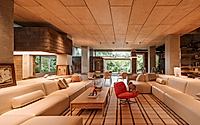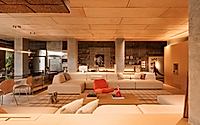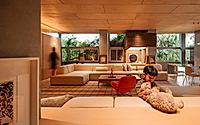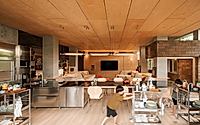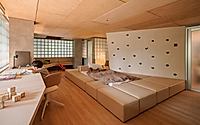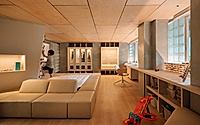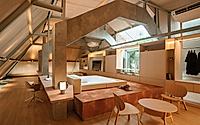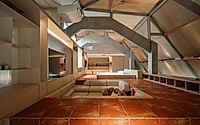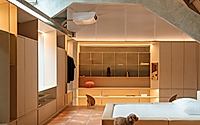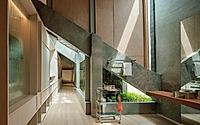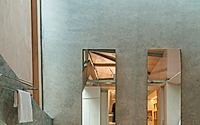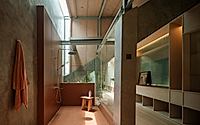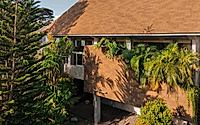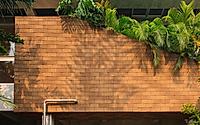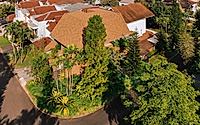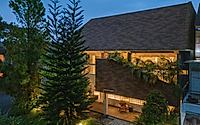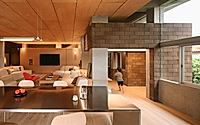Attic Above Garden by RAD+ar
Attic Above Garden by RAD+ar is a renovated apartment located in Jakarta, Indonesia. The design features an open-plan layout, enhancing the fluidity of the space while maintaining privacy and a connection to the outdoor greenery. Traditional materials dominate the interior, creating a welcoming atmosphere, with a special focus on the existing birch plywood roof ceiling and enhancing the design through semi-geometry and movable elements added by the homeowners over time.

Open Plan Design Eliminates Barriers By Removing Walls And Corridors
The open layout design eliminates barriers, removing walls and corridors within the space. By optimizing the existing structure, the design ensures that all floors above ground are open plans, minimizing walls or heavy elements that could disrupt the flow. This approach creates a series of alternating spaces characterized by intimacy and openness, light and shadow, offering room for growth and moments of variation through the strategic arrangement of furniture across the space, which interacts harmoniously with the existing structure and nature.
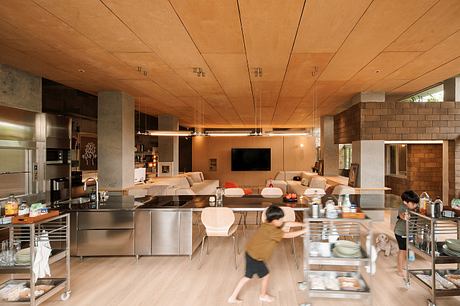
Monochromatic Colors And Textures Contrast Stainless Steel Area
The materials employed are honest and traditional, featuring monochromatic colors and textures throughout, with the exception of the stainless-steel pantry area are to constitute the background for the existing birch plywood roof ceiling. The attic is dominated by a consistent light brown hue, which harmonizes with the natural colors of the surrounding landscape that intersect through each floor. Both staircases connecting the floors are discreetly integrated, distinguished only by a darker color and porous texture. The remainder of the house showcases lighter colors and smooth surfaces, with the bathroom offering a surprising burst of more intense color.
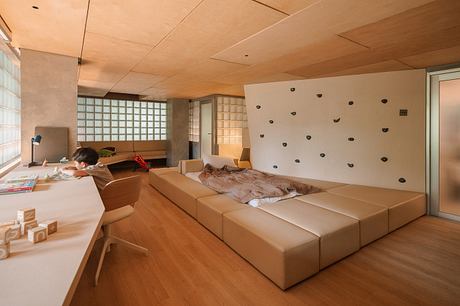
Semi Geometry Creates Ambiguous Spaces That Evolve Over Time
The arrangement of semi-geometry within the design, alongside the existing wooden elements, fosters an ambiguous and fluid space suited for essential residential functions. By working with the existing framework—determining what is sufficient and what may be excessive or insufficient—the spaces become difficult to precisely define, blurring lines and boundaries to create a more fluid functionality while the interior will be enhanced by movable elements added over time by the homeowners. This renovated house is designed for an architect couple who sought both the privacy of a home and abundant openings for natural light, along with a VIP view of the greenery.

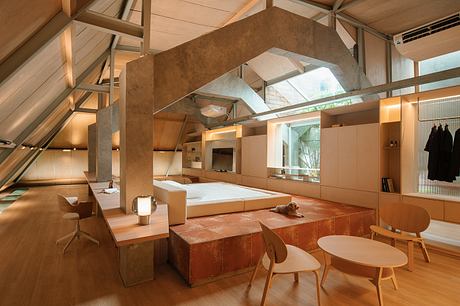
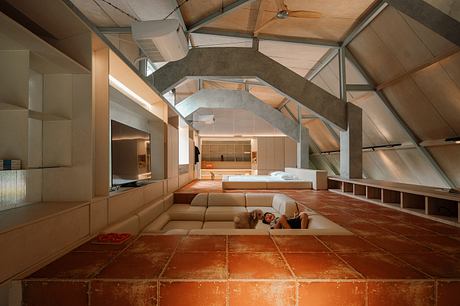
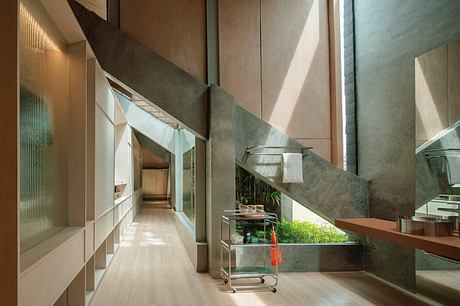
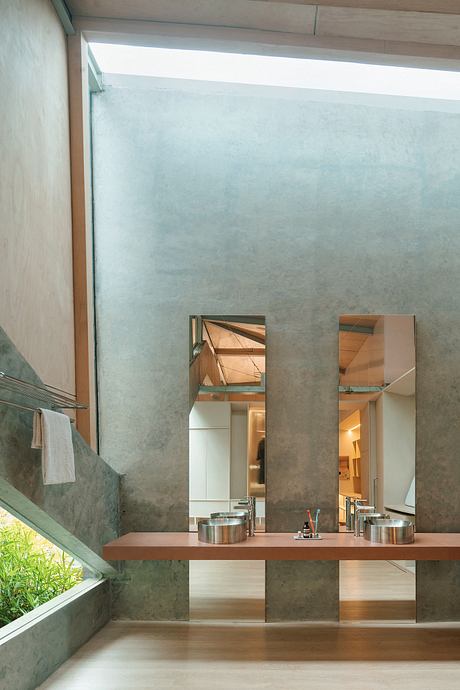
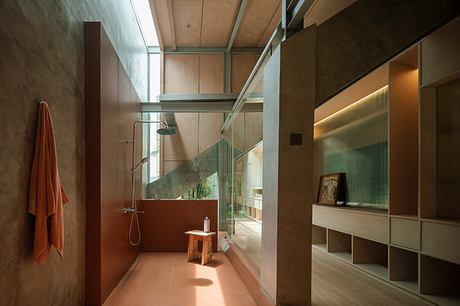
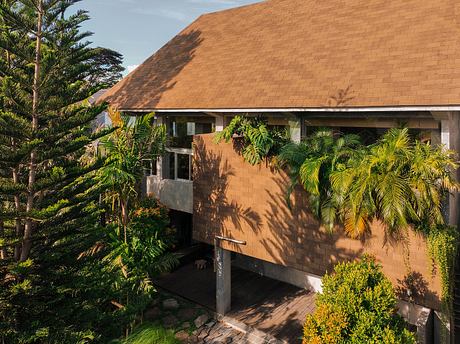
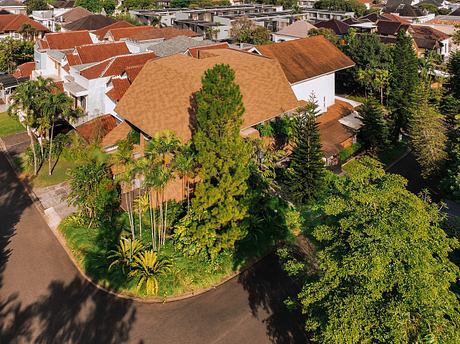
Photography by Ernest Theofilus
Visit RAD+ar
